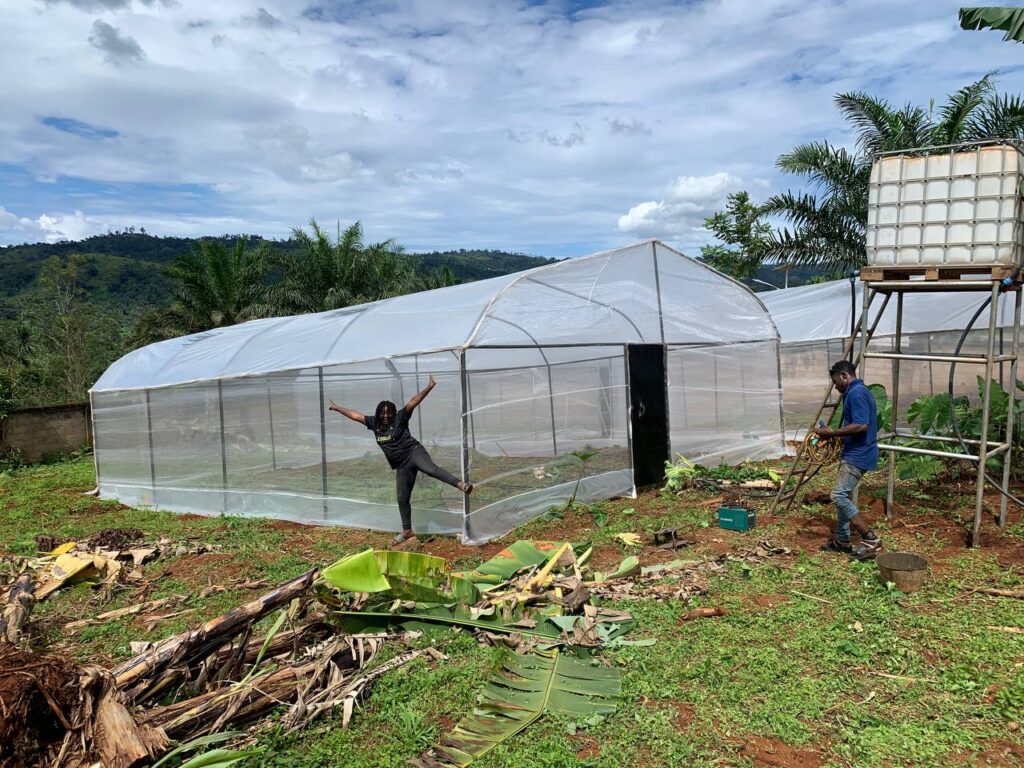Greenhouse Farming: An Adaptation to Climate Change
Population growth, climate change and less availability of food materials have become global concerns. The world population increases exponentially whereas food production has increased only arithmetically, meaning food availability per capita has decreased. The increase in population has also resulted in the use of more urban areas for habitation, less land available for cultivation and, hence, more food requirements. The resultant need is, therefore, to increase productivity and year-round cultivation.
The agricultural sector which Cameroon’s economy relies largely on employs about 70% of the country’s economically active population, contributing roughly 80% of the primary sector’s GDP, a third of the country’s foreign exchange earnings and about 16% of the country’s budgetary resources.
Despite its vast potential, Cameroon’s agricultural sector has numerous difficulties making it difficult for the nation to meet its ever-increasing food demands.
What is Climate Change
Climate change as defined by the United Nations (UN), refers to the long-term shifts in the temperatures and weather patterns driven by natural or manmade factors. this phenomenon has had a significant impact on the agricultural sector in the world at large and Cameroon in particular leading to a decline in crop yields, food insecurity and loss of income to farmers.
In recent years we have all seen and/or experienced the effects of climate change around us with clearly visible evidence of this by the manifestation of phenomena such as the increasing frequency and severity of droughts, more severe and frequent floods, loss in soil productivity, the disruption of the normal weather patterns and the fluctuations of the agricultural calendar.
The sun is the source of energy for plants and animals. This energy is converted into food (i.e. carbohydrates) by plants through a process called photosynthesis, accomplished at suitable atmospheric conditions. These conditions are provided by nature in different seasons and artificially by a greenhouse.
What are Greenhouses

Greenhouses, typically are made of glass or plastic and the primary objective of greenhouses is to extend the cultivating season (farm all year), protect plants from pests and weather conditions, and increase crop yields. They offer a suitable microclimate for plants and make possible growth and fruiting, which is not possible in open fields.
This is why a greenhouse is also known as a “controlled environment greenhouse”.
Through a controlled environment, greenhouse production is advanced and can be continued for a longer duration, and finally, production is increased.
The off-season production of flowers and vegetables is the unique feature of the controlled environment greenhouse. Hence, greenhouse technology has evolved to create a favourable environment, or maintain the climate, in order to cultivate the desirable crop, year-round.
Impact of Greenhouses
Greenhouses can play a crucial role in mitigating the effects of climate change by reducing the need for transportation and energy-intensive farming practices. By providing a controlled environment for plants to grow, greenhouses can increase crop yields and reduce the amount of land needed for farming. This can help to prevent deforestation and protect biodiversity.
These greenhouses provide an environment in which all external aspects of the plant’s growth cycle are controlled, i.e. the temperature, irrigation, soil quality and lighting. This means plants are put in optimal conditions for growth. with all these aspects being under strict control;
- The water use is limited only to what is necessary for the plants with the use of efficient irrigation systems.
- The controlled environment limits the chances of plants being affected by pests thus reducing the need and use of pesticides.
- Lighting and temperature control can be powered by renewable energy such as solar power thus reducing the use of fossil fuels to power these houses.
In conclusion, climate change is having significant impacts on agriculture globally and in Cameroon particularly. This has led to a decrease in crop yields, food insecurity, and loss of income for farmers. Cameroon needs to develop and implement policies that can help farmers adapt to changing climatic conditions.
The introduction of climate-smart agricultural practices such as greenhouse technology to address these challenges is a major step in the right direction to promote not only safer and environmentally friendly agricultural practices, it is also more profitable agricultural practices.


